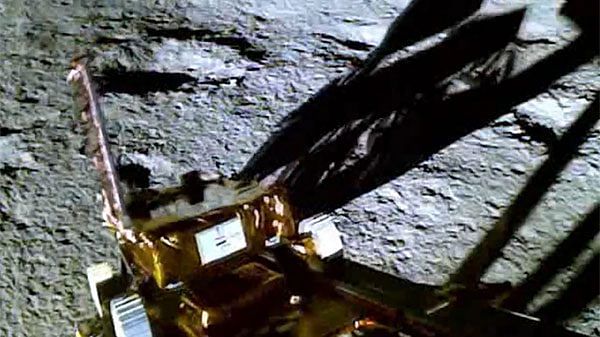New Delhi: The moon rover of India’s Chandrayaan-3 exited the spacecraft on Thursday to begin exploring the surface of the lunar south pole and conducting experiments, and was braced for new challenges, the space agency chief said.
The spacecraft landed on the unexplored south pole of the moon on Wednesday, making India the first country to achieve this feat just days after Russia’s Luna-25 failed in a similar mission.
The soft, textbook touchdown by the lander after a failed attempt in 2019 sparked widespread jubilation and celebration in the world’s most populous country. The media hailed the historic landing as India’s biggest scientific feat.
Indian Space Research Organisation (ISRO) chief S. Somanath said the lander and the rover were in good condition, and “both are working very well” but the experiments were yet to start.
“All activities are on schedule. All systems are normal,” ISRO posted on X, formerly Twitter. “Rover mobility operations have commenced.”
The rover, named “Pragyan”, has two instruments to conduct element and chemical composition experiments, and a robotic path planning exercise for future exploration.
Chandrayaan means “moon vehicle” in Hindi and Sanskrit. The rover is expected to remain functional for two weeks, or one lunar day, the period of time its solar-powered equipment is built to last.
Possible challenges
Somanath said there were “many issues” on the moon’s surface that ISRO will experience for the first time, especially lunar dust and temperatures that could impact moving parts.
“The mechanisms, the moving items…can get entangled with the dust there. It can get into the moving parts and jam them, the bearings of the system may not work, the motors may not work,” he told the CNN News 18 TV channel.
Lunar dust is different from that on the surface of earth and in the absence of air on the moon, it could stick to materials of the rover, impacting its operation, he said.
“All this creates problems in those mechanisms…so let us see how it goes,” the scientist said. “We will face it…that’s why we are exploring. If everything is known, what is the fun in doing it?”
Accomplished with a budget of about 6.15 billion rupees ($75 million), this was India’s second attempt to touch down on the moon. A previous mission in 2019, Chandrayaan-2, successfully deployed an orbiter but its lander crashed.
The moon’s rugged south pole is coveted because of its water ice, or frozen water, which could prove to be a source of fuel, oxygen, and drinking water for future missions, but its rough terrain makes landing challenging.
Celebrations
People across the country tuned in to watch the landing on Wednesday, with nearly 7 million people viewing the YouTube live stream alone.
Prayers were held at places of worship, and schools organised live screenings for students.
Besides boosting India’s standing as a space power and its reputation for cost-competitive space engineering, the landing is also seen as a major moment of national pride.
Prime Minister Narendra Modi said he has been congratulated by everyone since Wednesday and that the world saw the successful landing not as one country’s achievement but that of all of humanity.
“It is a matter of pride and a pat on the back for Indian scientists,” Modi said at the BRICS summit in Johannesburg on Thursday.
Indian newspapers had banner headlines reading: “The moon is Indian”, “India goes where no nation’s gone before”, and “India lights up the dark side of the moon”, among others.
“Lunar landing is the most significant Indian scientific achievement,” the Times of India said in an editorial.
“If India is now in a position to harvest the benefit of a spurt in interest in basic sciences there’s one reason: ISRO,” it said.
(Reporting by YP Rajesh and Sakshi Dayal; Editing by Gerry Doyle, Toby Chopra and Bernadette Baum)
Disclaimer: This report is auto generated from the Reuters news service. ThePrint holds no responsibilty for its content.



